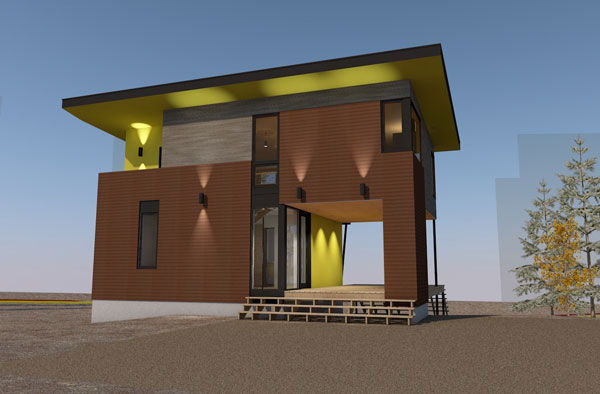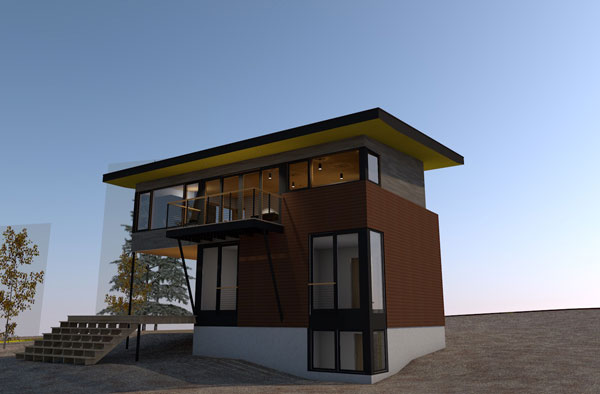When I joined our firm in 1999—then Mulfinger, Susanka, Mahady & Partners—the firm was enjoying a flurry of “small” success. Sarah Susanka had recently published The Not-So-Big House to great fanfare and the quality-over-quantity message guided much of our work for the next decade. With subsequent tech and housing booms, the average American home continued to get bigger, and despite much of our work being cabins and remodeling, our projects were rarely exceptions.
Now, nearly two decades later, I find myself captivated by a not-so-big reboot—this time it’s tiny! HGTV’s various takes on the new tiny house movement are such a refreshing turn from people eagerly selecting the worst house on the crummiest block in the most isolated neighborhood because it has granite countertops and stainless-fronted appliances. Though I confess, my favorite Tiny episodes are the ones in which the Tiny shoppers look around anxiously and question, “Where am I going to put all my stuff?!”
You should know tiny houses existed long before HGTV. Of course, in ancient, indigenous, and nomadic forms, but also in those cute little trailer boxes made popular on the cable network. Architect and writer Lester Walker documented and beautifully illustrated a number of tiny houses in his 1987 book, Tiny Houses or How to Get Away From It All.
At the recent AIA Minnesota Homes By Architects Tour, I was standing in a warm, lovely, and exquisitely detailed home when I heard one of the tour staffers exclaim, “and it’s only 4500 square feet!” As with the majority of our clients, many of the tour homeowners were empty nesters, or at least Boomers, designing and building retirement homes with ample room for entertaining and accommodating family and friends.
When we bought our own house nearly three years ago, we were smitten with its inherent values: south facing views to a lush and shady backyard, cozy rooms with great natural light, and charming character, all within 1100 square feet. We may have overlooked the bowing roof and sloping floors, but fundamentally agreed that buying a smaller house would enable us to make it better.
I have become increasingly curious if age is a factor in this as much as lifestyle. I certainly see more Millennials shopping for tiny houses, and work with more Boomers who have established wealth and comforts associated with home. But I’ve also recently worked with a couple my own age on a new cabin with the smallest footprint I’ve ever put on paper—440 square feet*—and it was exhilarating! At any size, and any budget, building less creates the opportunity to build better, and if the trend is back, hashtag that!
*Okay, that is the first of three stories for a total of 1500 square feet but that’s still only 60% of the median new single-family home.

